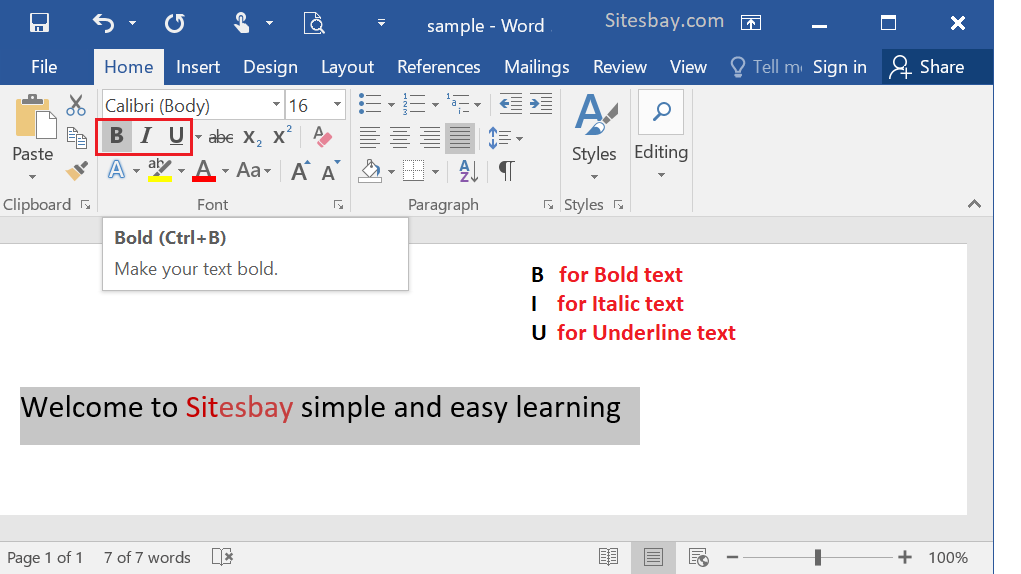
In the realm of document design, text formatting serves as a powerful tool for conveying emphasis, style, and clarity. Whether you’re crafting a professional report, composing a creative story, or designing a persuasive presentation, knowing how to format text as italic in Microsoft Word is essential for adding visual interest and enhancing the readability of your content. In this extensive guide, we’ll explore the intricacies of italic formatting in Microsoft Word, empowering you to wield this versatile feature with finesse and precision.
Understanding the Significance of Italic Formatting:
Before delving into the practical aspects of italic formatting, it’s crucial to understand the role it plays in document design. Italic formatting serves multiple purposes, including:
- Emphasizing words or phrases: Italicized text draws attention to specific words or phrases, indicating importance or adding emphasis to key points.
- Differentiating text elements: By applying italic formatting to certain text elements, such as titles, subtitles, or quotations, you can visually distinguish them from the surrounding text.
- Conveying style or tone: Italicized text can convey a sense of style, sophistication, or informality, depending on the context and intent of the document.
By mastering italic formatting, you can enhance the visual appeal, clarity, and impact of your documents, elevating them to new levels of professionalism and effectiveness.
Basic Italic Formatting:
Formatting text as italic in Microsoft Word is a straightforward process that can be accomplished using intuitive tools and commands. Here’s how to do it:
- Select the Text:
- Begin by selecting the text you wish to format as italic. You can do this by clicking and dragging your cursor over the desired text or by placing your cursor at the beginning of the text and holding down the mouse button while dragging to the end of the selection.
- Apply Italic Formatting:
- With the text selected, navigate to the “Home” tab located in the top menu bar of Microsoft Word.
- In the “Font” group, you’ll find the “Italic” button, represented by an italicized “I” icon. Click on this button to apply italic formatting to the selected text.
- Verify Italic Text:
- After applying italic formatting, the selected text will appear slanted to the right, indicating that it is now formatted as italic. The surrounding text will remain unaffected.
Advanced Italic Formatting Options:
While basic italic formatting suffices for most scenarios, Microsoft Word offers advanced features and customization options to further enhance the functionality and usability of italicized text. Here are some additional features you may explore:
- Keyboard Shortcut:
- To expedite the process of applying italic formatting, you can use a keyboard shortcut. Simply select the text you wish to format as italic and press “Ctrl + I” (for Windows) or “Command + I” (for Mac) to apply italic formatting instantly.
- Italicize Entire Paragraphs:
- In addition to formatting individual words or phrases, Word allows users to italicize entire paragraphs. Place your cursor anywhere within the paragraph you wish to italicize, then apply italic formatting using one of the methods described above.
- Italicize Styles:
- Word’s style formatting feature enables users to apply consistent formatting to text elements throughout the document. To italicize text using a specific style, navigate to the “Styles” gallery in the “Home” tab and select a style that includes italic formatting.
Best Practices for Italic Text Usage:
While italic formatting offers versatility and style in document design, it’s essential to use it judiciously and in accordance with best practices. Here are some tips to consider:
- Use Italic for Emphasis:
- Reserve italic formatting for words or phrases that require emphasis or special attention. Avoid italicizing large blocks of text or entire paragraphs, as this can detract from readability and effectiveness.
- Maintain Consistency:
- When using italic formatting for specific text elements, such as titles, subtitles, or quotations, strive to maintain consistency throughout the document. Consistent formatting enhances readability and coherence, reinforcing the document’s visual hierarchy.
- Consider Accessibility:
- While italicized text can add visual interest, it may pose challenges for users with visual impairments or reading disabilities. Ensure that italicized text is accompanied by clear context or alternative representations to maintain accessibility and inclusivity.
Conclusion:
Formatting text as italic in Microsoft Word is a versatile and powerful tool for enhancing the visual appeal, emphasis, and readability of your documents. By mastering the basic formatting process, exploring advanced options, and adhering to best practices for italic text usage, you can create documents that captivate your audience and effectively convey your message. Whether you’re emphasizing key points, adding style to your writing, or differentiating text elements, italic formatting offers flexibility and creativity to elevate your document’s impact and effectiveness. So, the next time you embark on a document creation journey in Word, remember to harness the power of italic formatting to transform your writing into a visual masterpiece that resonates with your audience.